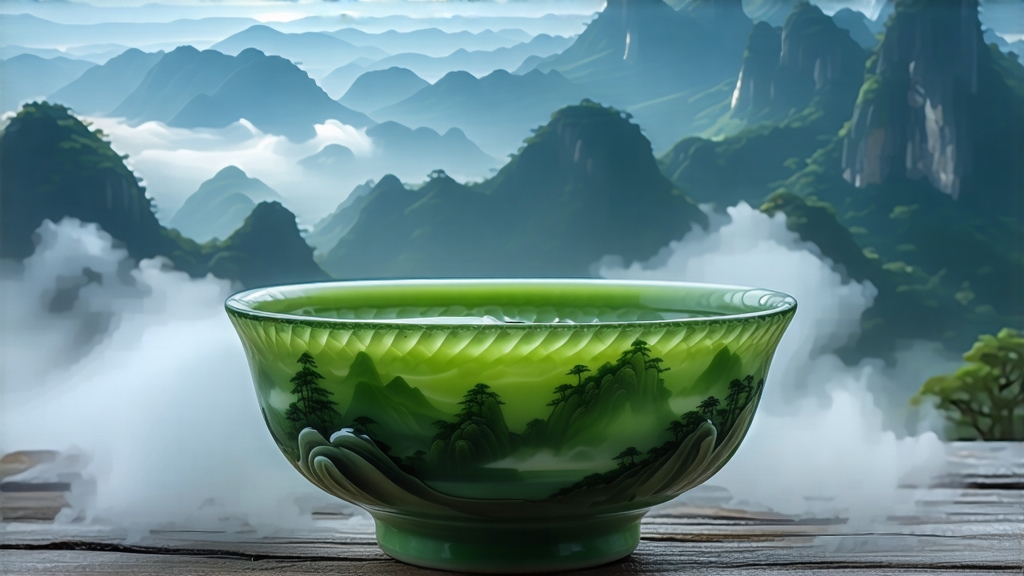
If green tea is the fresh-faced youth of Chinese tea and pu-erh the wise elder, then Tieguanyin—literally “Iron Goddess of Mercy”—is the poised middle-aged poet whose every gesture balances vigor with introspection. Among the five major families of Chinese oolong, none has traveled so nimbly from temple shadow to global spotlight, and none rewards the patient drinker with such kaleidoscopic change across infusions. This essay invites the international reader to walk the granite paths of Anxi County in southern Fujian, to hear the ring of wok on bamboo, and to taste the liquid orchid that has seduced merchants, monks, and emperors for almost three centuries.
-
Legend and lineage
The most oft-told story begins in the 1720s, when a poor farmer named Wei Yin found a weather-worn iron statue of Guanyin, the Bodhisattva of Compassion, near a cave in Xiping village. After polishing the icon and lighting incense, he dreamed of a cave behind his hut where a single tea tree shimmered in moonlight. He transplanted it to his garden, and its leaves, once rolled and baked, produced a fragrance so haunting that neighbors believed the goddess herself had guided his hands. A competing tale credits the scholar Wang Shimao, who discovered the same cultivar while gathering medicinal herbs for his ailing mother. Both stories agree on three points: the tea was first named “Guanyin” to honor divine mercy, the prefix “iron” was added to describe the leaves’ heavy, metallic feel when rolled, and the cultivar was a gift from the stony, mist-drunk hills of Anxi. -
Terroir: where granite breathes
Anxi lies 25 km inland from the Taiwan Strait, cupped by the Daiyun and Wuyi ranges. Day-night temperature swings of 10 °C slow leaf growth, concentrating amino acids and volatile aromatics. The soil is lateritic granite rich in potassium and manganese; rainwater percolates quickly, forcing roots to dive deep for minerals. At 500–800 m elevation, clouds linger until mid-morning, filtering sunlight into a soft, diffused glow that encourages the synthesis of floral compounds such as linalool and geraniol. These geographic signatures are so distinctive that China granted Anxi Tieguanyin Protected Geographical Indication status in 2008, the tea equivalent of a French appellation. -
Cultivars: siblings under one goddess
Although “Tieguanyin” is both tea and tree, botanists recognize several clonal variants. The original “Red Heart” (hongxin) has a crimson petiole, small leaf, and low yield but unrivaled fragrance. “Green Heart” (lvxin) grows faster, tolerates mechanized plucking, and dominates today’s export market. “White Heart” (baixin) and “Soft Branch” (ruanzhi) survive in heritage gardens, prized for their nuanced cup but demanding hand processing. Farmers further differentiate by season: spring water (mingqian) leaves are the most tender, autumn aroma (qiuxiang) the most perfumed, while summer and winter harvests usually become ingredient tea for blending. -
Craft: the twelve labors of a leaf
Modern Tieguanyin is not a single recipe but a spectrum of oxidation, rolling, and roasting that can tilt the same raw leaf toward green freshness or amber depth. The traditional “rock-fermentation” (yanfa) method, revived by boutique makers, follows twelve labor-intensive steps:
a. Picking: only the top three leaves and half-open bud, ideally before 10 a.m. when dew still pearls.
b. Sun-withering: leaves are spread on bamboo screens for 20–40 min until they lose 10 % moisture and emit a faint cucumber note.
c. Indoor withering: moved to climate-controlled racks where they are gently tossed every hour to bruise edges, triggering oxidation.
d. Shaking: the signature “green leaf with red edge” appears after 4–6 tosses; timing is judged by the sound—soft rustle means ready.
e. Fixation: wok-fired at 280 °C for 3 min to arrest oxidation, locking in 20–30 % partial fermentation.
f. Rolling: wrapped in square cloth and kneaded under foot or mechanical press to rupture cells, releasing sap that will later glisten as “white frost.”
g. First baking: 90 °C for 90 min reduces moisture to 30 % and